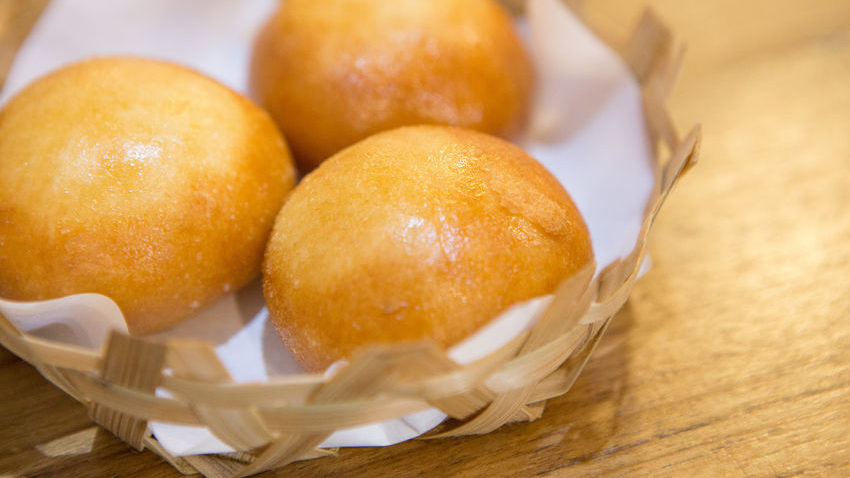Both fluffy and crispy in one single bite, deep-fried Chinese buns or also known as fried mantou, is a staple carb-heavy white bread commonly found in the Chinese cuisine.
This dish is often served during special occasions like the Lunar New Year and weddings. These round-shaped buns are also desserts when served with sweetened condensed milk. The perfect mantou is even more perfect with condensed milk taste on top.
What is Deep-Fried Chinese Bun?
To put it, fried mantou is Chinese buns made with yeast, flour and water, but with recent innovation, recipes sometimes can include additions like sweet potato, whole wheat and milk.
Unlike western pastries, mantous are steamed and not baked, which contributes to the fluffiness and glossy outer appearance. Mantous that are deep-fried has a golden shimmer and possess a crispy first bite without compromising on the softness of its insides.
Similar to bread, mantous don’t carry much taste, which is why they pair ideally with strongly-flavoured side dishes, dipping sauces and other meaty fillings. In Singapore, for example, fried mantou is popular with chilli crab, as the plainness of the bun acts as a ‘sponge’ to soak up the flavours of the crab dish.
History of the Chinese Bun
The first mantou came into existence during the period of the Three Kingdoms. The story begins with Zhuge Liang, a famous military strategist who led an army to conquer the caves of the barbarians. To reach the beasts, his army needed to cross the Lushui River – which was infamous for being controlled by the God of Rivers.
It was said that any human who dared cross the river would face the wrath of the God of River, lest a sacrifice was made by offering heads of barbarians into the river to appease the God. Zhuge Liang, as kind and merciful as he was, refused to sacrifice the heads of his soldiers. So he ordered them to create balls of dough to mimic the shape of a barbarian’s head.
These balls of dough successfully deceived the God of River, and Zhuge Liang and his army were able to complete their expedition without losing lives to the river. Eventually, these dough balls came to be known as mantou, which means “barbarian’s head” in the Chinese language.
Variations of Deep-Fried Chinese Bun
Chinese buns come in many different forms. The alternative to the Deep-Fried Chinese Bun is the plain non-fried version, sometimes known as the Silver Bun. Together, the Golden and Silver Buns would be consumed as a dessert with sweetened condensed milk during the Lunar New Year.
Other variations include stuffed buns, which are more commonly known as bao instead. Steamed like mantou, baos come with a wide range of fillings – the more popular ones being red bean paste, vegetables, and minced char siew and so on.
While mantous and baos are distinctly Chinese dishes, many regions surrounding China also carry their version of a bread bun, in both stuffed and unstuffed forms. For example, in Japan, a stuffed bun is called a manju.
In Thailand, stuffed mantou is known as salapao. Meanwhile, in the Philippines, they are called siyopaw. Food researchers also believe that the influence of mantou, or rather the idea of a stuffed dish, led to the creation of dumplings. Few regions like Korea and Afghanistan named their stuffed dumplings as mandu and mantu respectively.
Where to Find Deep-Fried Chinese Bun in Malaysia
As a speciality dish, deep-fried mantou is most likely found during banquet dinners and weddings or the Chinese New Year.
Visit foodpanda to learn more about other beautiful dishes.
